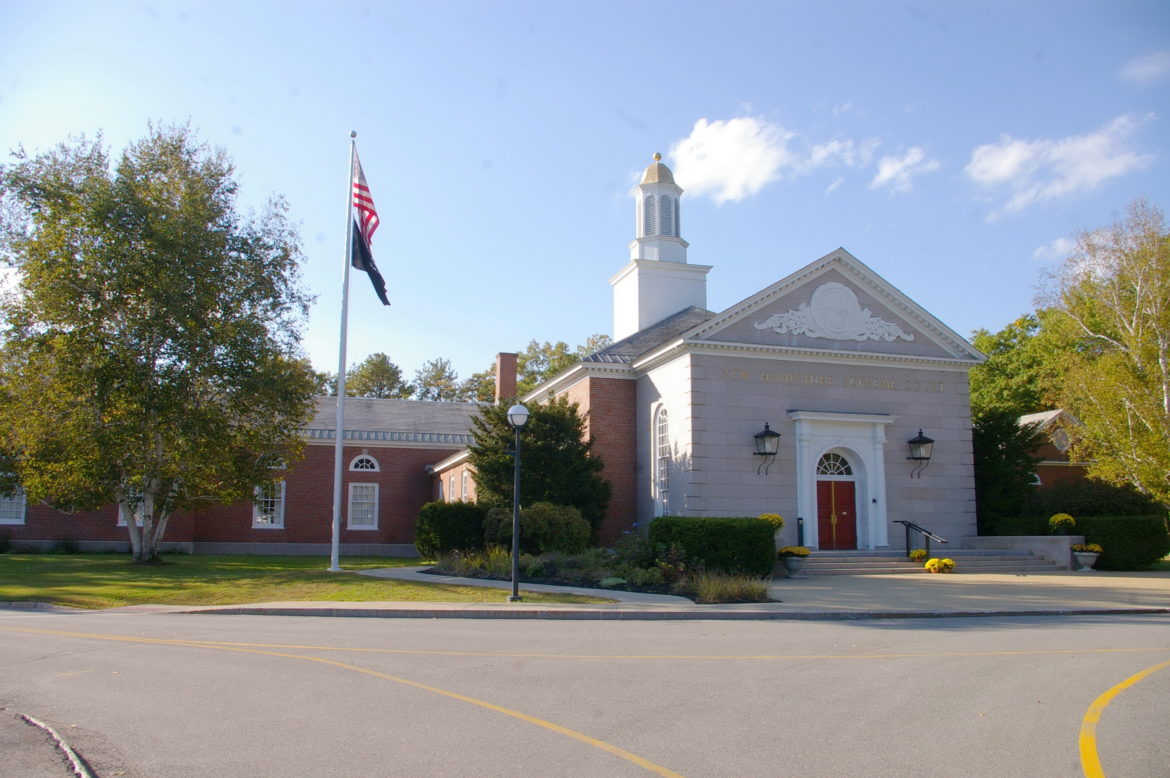By KATHARINE WEBSTER, InDepthNH.org
CONCORD – The state Supreme Court on Wednesday upheld the state legislature’s 2020 redistricting map, rejecting an appeal in a lawsuit brought by the cities of Dover and Rochester and 10 residents of other towns without their own state Representatives.
“The plaintiffs have not persuaded us that the trade-offs the Legislature made in enacting (this map) were unreasonable,” the justices wrote in their 4-0 opinion. “We tread lightly in this political arena, lest we materially impair the legislature’s redistricting power.”
“We’re disappointed in the results,” said Henry Quillen, a Portsmouth lawyer who provided pro bono representation to the 10 individual plaintiffs. Jennifer Perez, attorney for Dover, also said the city was disappointed, “but we respect the court’s determination.”
Attorney General John Formella said in a statement Wednesday that he was pleased the Supreme Court upheld a lower court decision in finding the Legislature’s redistricting map from 2022 constitutional.
“Today’s decision reaffirms the Court’s prior precedent recognizing the Legislature’s broad discretion in the area of redistricting and recognizes that the Legislature must balance complex constitutional requirements when determining the most appropriate map,” he said.
The plaintiffs in City of Dover v. Secretary of State argued that the Legislature had failed to comply with a 2006 amendment to the state constitution that says that when the population of any town or ward is within a “reasonable deviation” of the “ideal population” for one or more state Representative seats, it should have its own district of one or more state Representative seats.
That “ideal population” is about 3,300 people for each of the state’s 400 Representatives, plus or minus a “reasonable deviation” that’s small enough to meet the state and U.S. Constitution’s guarantees of equal representation. Less than 10 percent is presumed to be a “reasonable deviation,” according to previous court rulings.
Following the 2020 U.S. Census, the state Legislature in 2022 drew a redistricting map in which 55 towns or wards that were close to that “ideal population” did not have their own state representative districts.
Some of that was unavoidable, as all districts are drawn within county boundaries and all districts, including floterial districts that combine smaller numbers of voters across town lines, must be contiguous. However, a nonprofit coalition, Map-a-Thon, was able to reduce that number to 41 towns and wards while meeting all other legal requirements.
When the Legislature adopted its own map, instead of Map-a-Thon’s suggested plan, Rochester and Dover each lost a state Representative. They sued alongside individual voters from most of the other towns and wards that would have had their own Representatives under the Map-a-Thon plan but did not under the Legislature’s map.
The plaintiffs’ main argument was that, at the time the constitutional amendment was passed in 2006, the Legislature and then-Secretary of State Bill Gardner understood that the intent was for as many towns and wards as possible to have their own state Representatives.
They said that the constitution required the Legislature to maximize the number of towns and wards with their own representative districts, and they further argued that the Legislature’s map exceeded the 10 percent limit for a “reasonable deviation,” violating the equal protection clauses of the U.S. and New Hampshire Constitutions. The Legislature’s deviation was slightly higher, at 10.13 percent.
The main counties affected were Hillsborough, Merrimack and Strafford. In Hillsborough County, New Ipswich and Wilton would have had their own state Reps under the Map-a-Thon plan without any other town losing its own state Rep; in Merrimack County, Bow and Hooksett would have been allocated their own state reps without any other town losing a dedicated Representative, they argued.
In Strafford County, Barrington, Lee, Milton and one ward each in Dover and Rochester “lost” dedicated state Representatives so that Durham could have its own state Representative, instead of sharing a district with Madbury.
However, the New Hampshire Attorney General’s Office argued that the inevitable compromises that come with redistricting, such as deciding whether Durham – the largest town in Strafford County – should have its own state Representative, as it does under the Legislature’s redistricting map and would not have under the Map-a-Thon plan, are essentially political questions.
The attorney general’s office also said that while under 10 percent had been accepted as a “reasonable deviation” from the “ideal population,” it was a guideline, not a hard and fast rule.
Strafford County Superior Court Judge Mark Howard agreed, and noted that under the Legislature’s redistricting map, Strafford County has one less floterial district. He also said that using Map-a-Thon’s map would have required redrawing multiple districts in Hillsborough and Merrimack Counties, including breaking up some established two-town districts.
The state Supreme Court upheld Howard’s ruling and the attorney general’s arguments in its unanimous ruling Wednesday, saying that when “the Legislature’s choice was between maps that did not fully comply with” the state constitution, then that choice falls within the Legislature’s political and policy discretion.
“The legislature is far better equipped than the judiciary … to identify and then reconcile traditional state policies within the constitutionally mandated framework of substantial population equality,” the justices wrote.
“It is not for this court to decide which noncompliant plan the Legislature should have enacted.”





